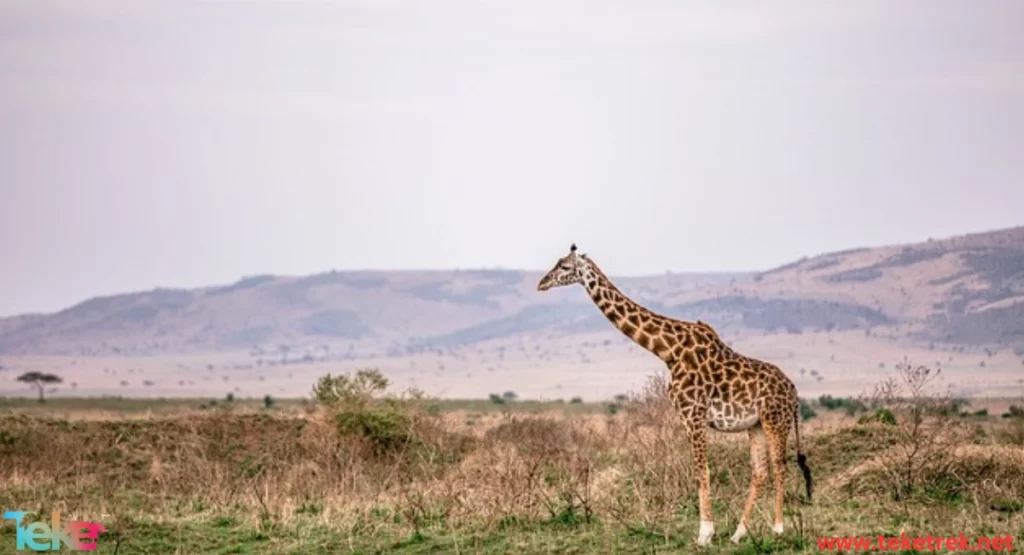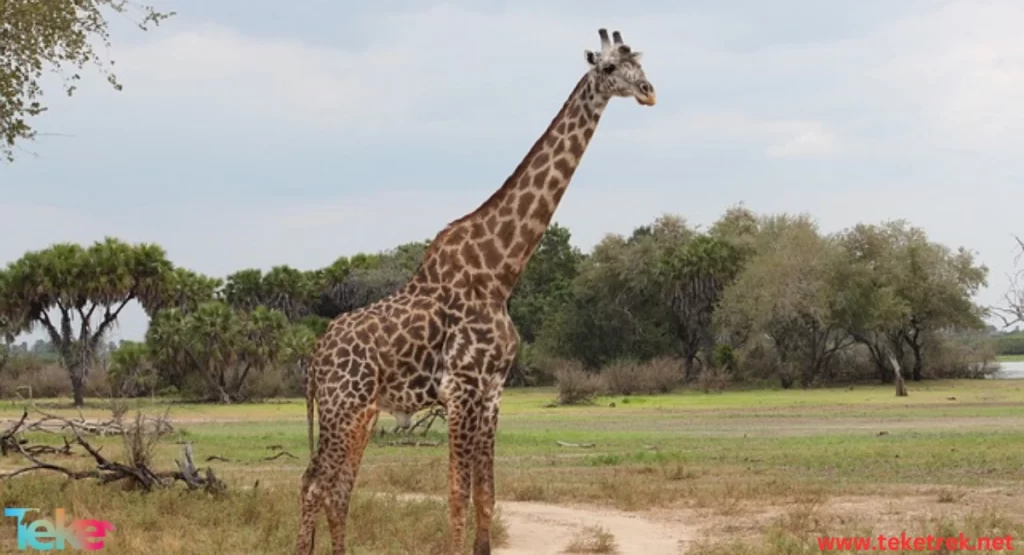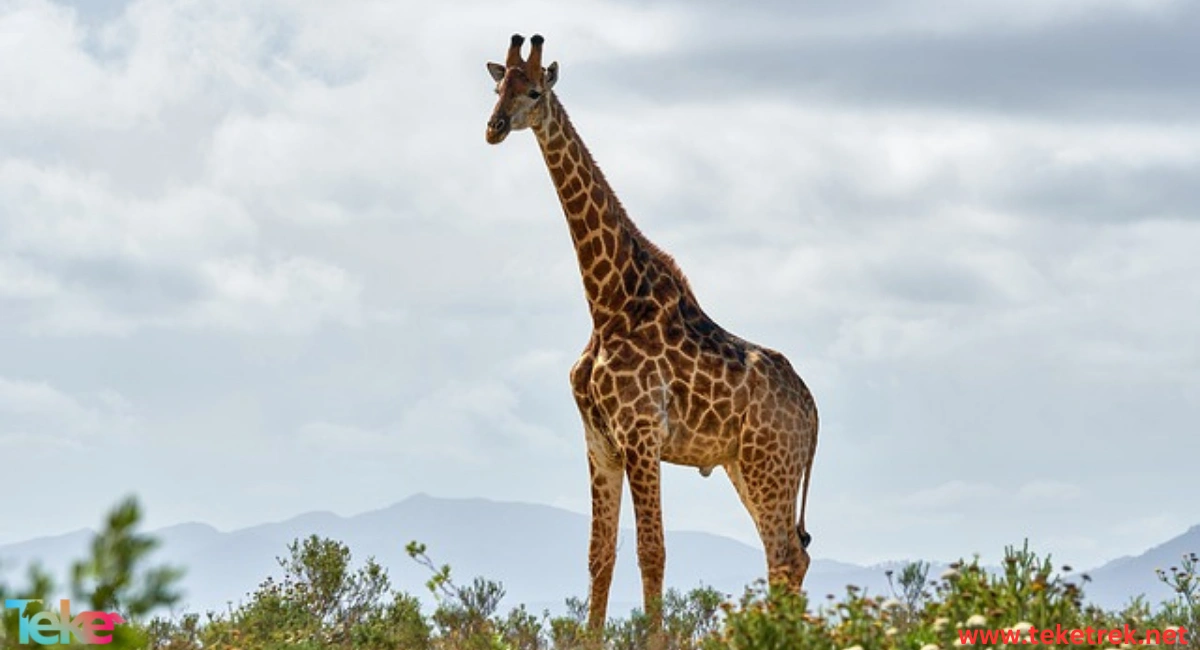Compared to most giraffe species, Kordofan giraffes are relatively small, with more irregular spots on the inner legs.
Let’s learn more about it from teketrek.

Where the Kordofan giraffe is found:
Kordofan giraffes are found in southern Chad, the Central African Republic, Sudan, and northern Cameroon, as well as northeastern Democratic Republic of the Congo.
The habitats of the Kordofan giraffe include savannah forests, shrubs, scattered trees, and open bush.
Kordofan giraffe habitat
Little is known about the behavior of Kordofan giraffes.
In general, these giraffes are found in groups that vary in size and composition.
The sexes are usually separated in these groups, although there are mixed-sex groups consisting of adult females and young males.
As males age, Kordofan giraffe males become more solitary, but may also associate in pairs or with groups of females.
Like all giraffes, the Kordofan giraffe is not territorial, but its home ranges vary according to rainfall and proximity to human settlements.
Male Kordofan giraffes use their necks as weapons in combat, a behaviour known as “necking”.
The neck is used to establish dominance, and males who win necking bouts have greater reproductive success.
Kordofan giraffes browse during the early and late hours of the day.
Between these hours, giraffes mostly stand and wander, with the predominant activity at night being rumination, when they mostly lie down.
Small herds of six to eight giraffes spend their days wandering over an area of up to 120 square kilometres in search of food.
Giraffes typically move forward at a leisurely pace, and when fleeing enemies they can reach speeds of up to 55 kilometres per hour.
Communication between giraffes is inaudible to the human ear, as they make sounds in the low-frequency ultrasonic range.
The exception is the mother’s call to her young.
Kordofan giraffe diet: What do Kordofan giraffes eat?
Kordofan giraffes are herbivores (leaf eaters, fruit eaters).
They usually feed on leaves, fruits, tree branches and young shoots, as well as seeds and flowers of woody plants, especially acacia species.
Reproduction stages of the Kordofan giraffe:
Kordofan giraffes are polygamous, meaning that males mate with several females.
Male Kordofan giraffes usually engage in battles, after which the winner gets the right to mate with receptive females whenever and wherever they find them.
The gestation period lasts 13 to 15 months, and produces a single offspring, and sometimes twins.
Female Kordofan giraffes give birth in a designated birthing area, which they also use throughout their lives.
A newborn calf can walk within an hour of birth, and can run within 24 hours of birth.
Giraffes give birth standing up, the newborn gliding relatively gently to the ground from a height of two metres, where it settles briefly in the birth hole so that its head and neck are only about 40 cm above the ground when released.
Giraffes have a light-coloured coat with yellowish-brown to blackish-brown spots, the size, shape and colour of which vary depending on the subspecies.
They do not have spots on their stomachs or on parts of their legs.
Threats to the Kordofan giraffe:
The main causes of the decline in giraffe numbers are habitat loss and direct killing for the bushmeat market.
These beautiful animals have been extirpated from much of their historical range, and protected areas such as national parks now provide important habitat and protection from poaching for giraffe populations.
Key facts about the Kordofan giraffe:
Family Artiodactyla
Giraffidae. The Kordofan giraffe belongs to the phylum Artiodactyla, subphylum Vertebrates, class Mammalia.
According to the IUCN Red List, the total population of the Kordofan giraffe is approximately 1,942 individuals, of which approximately 1,400 are likely mature.
Currently, the species is classified as Critically Endangered (CR) on the IUCN Red List, and its numbers are declining today.
Giraffes have a significant impact on the trees they feed on, delaying the growth of young trees by several years and giving a “waistline” to very tall trees.
In addition, when a predator is detected, they can serve as a warning system for other nearby animals.
Like humans, Kordofan giraffes have seven vertebrae in their long necks.
Kordofan giraffes pluck leaves from the tops of trees by sticking out their tongues, which can be up to 50 cm long.
As a result, giraffes have almost no competition for food. Their geographic range is closely linked to the presence of trees that provide them with leaves.

FAQs about Kordofan giraffes
- How many Kordofan giraffes are left?
There are about 2300 giraffes left.
- Why is the Kordofan giraffe endangered?
Due to habitat loss and overhunting.
In conclusion, the Kordofan giraffe is one of the natural icons of the African continent and represents an important part of the biodiversity. This giraffe faces major threats due to habitat loss and poaching. Efforts to protect these creatures are essential to ensure their survival for future generations. Through international and local cooperation, effective protection of this unique species can be achieved and the balance of the ecosystem in which it plays a pivotal role can be maintained. Conserving the Kordofan giraffe is not just an environmental issue, it is also a moral responsibility towards protecting our natural heritage.
References





